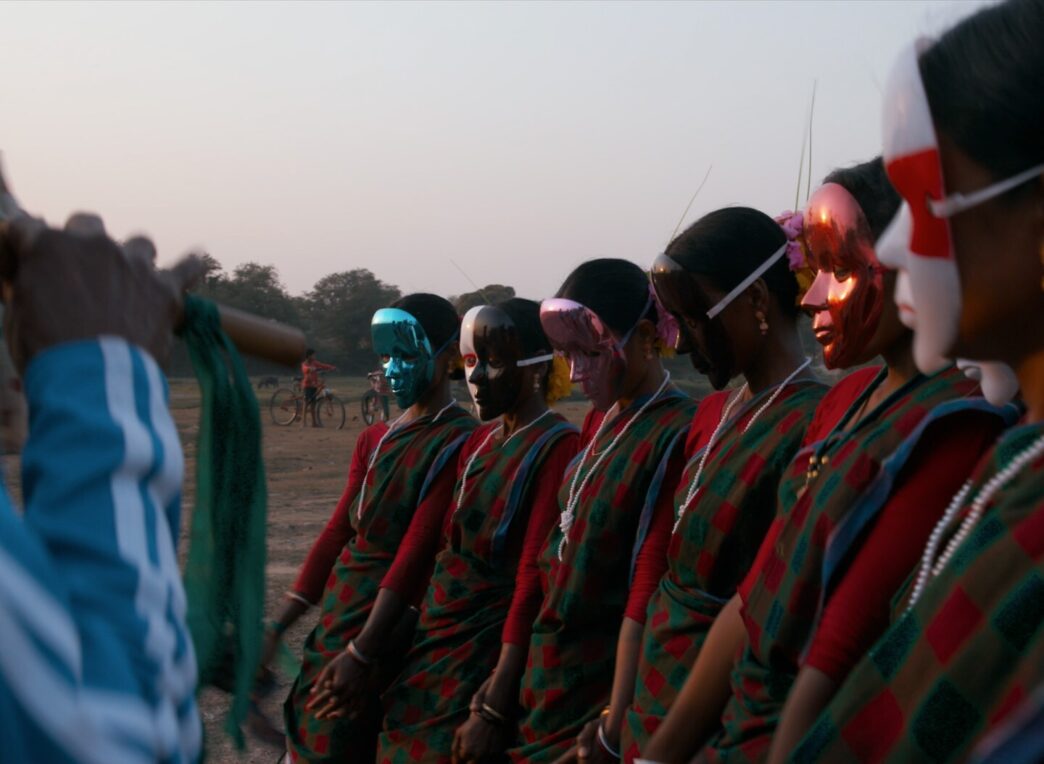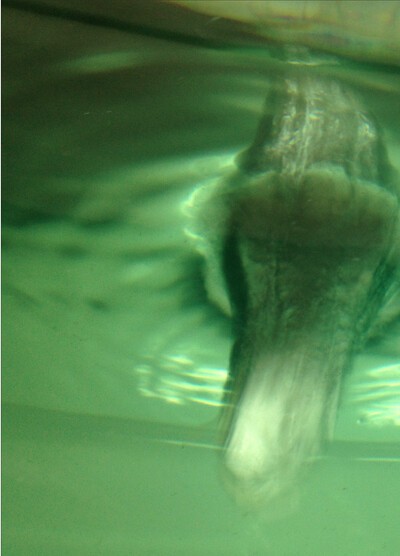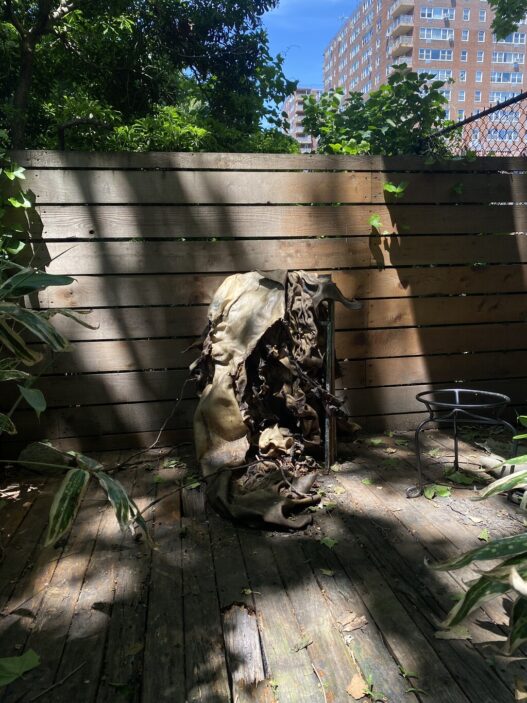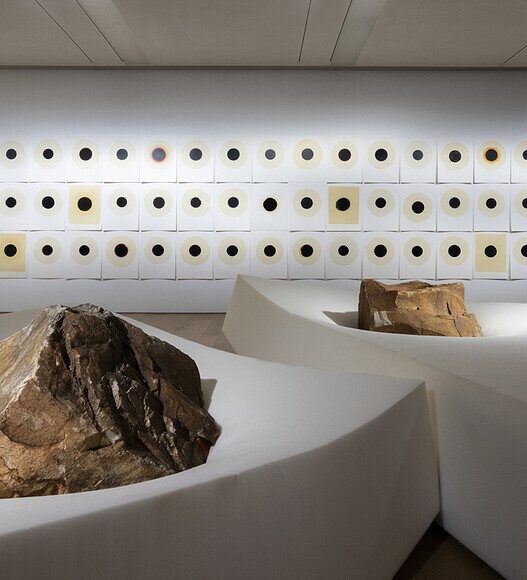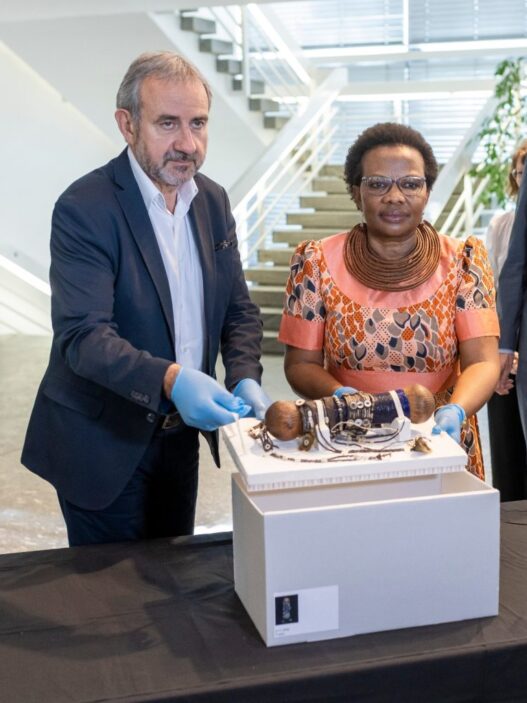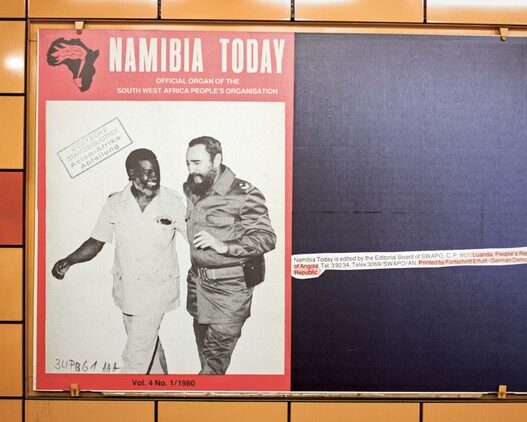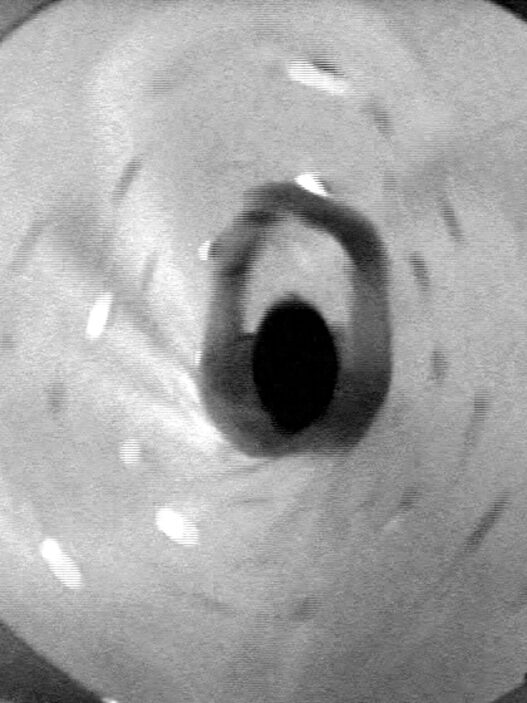June 23–October 2, 2022
The Otolith Group has been making movies, audio pieces, installations, exhibitions, and texts since 2002. All of their work is influenced by thorough research, decolonial thought, and cross-cultural relationships. The artists allegorically indicate their goal to work in multiple dimensions at once by taking their name from a tiny mechanism found in the inner ear of vertebrate animals—a delicate device by which bodies orient, balance, and register acceleration and location. The Otolith Group fosters speculative versions of the present through their work, which crosses generations, geographies, and historical layers and combines science fiction, critical theory, and exercises in fictitious autobiography. Their work, which is infused with lyrical resonances, sheds light on pieces of unwritten histories and demands an archeological connection with the future and with the unresolved and partially erased past.
The film installation O Horizon, a significant piece showing the Visva Bharati school in Santiniketan, West Bengal, founded by Nobel laureate, author, educator, social reformer, and polymath Rabindranath Tagore in 1921, is the focal point of this exhibition. The important role of intergenerational transmission in any society, the urgent need for humans to rewrite their planetary relations in non-extractive terms, and the threats of national chauvinism and religious extremism are just a few of the key issues Tagore foresaw in guiding modern India toward cultural independence and transformation. Through their investigation of contemporary Santiniketan, The Otolith Group assesses the enduring influence of Tagore’s vision. The poem The Year 1400, written by Tagore in 1896, serves as the film’s prologue. In it, he speaks to his readers in the future about the impending arrival of spring. The poet draws a connection between his surroundings, the climate and biodiversity of his day, and those of the future in his desire to communicate with future generations through words. One of O Horizon’s initial ideas is to construct an encounter in which the audience might react to Tagore’s exploration of the possibility of something being sent back in time through transtemporal poetics.
The path taken by O Horizon through the Visva Bharati campus eludes the most lyrical, discursive, and operatic aspects of documentary filmmaking. The camera takes us through dances, rehearsals, and rituals; indoor and outdoor lessons; epic poems, dialogues, and dramas; and animal gazes and vegetative depths in stillness captured by lenses. The recital and performance of poetry are interspersed with botanical observations, scientific conversations, and broad perspectives. Detail-oriented observations are made of murals and public sculptures, which serve as symbols and allegories of Santiniketan’s aesthetic modernity. Digital screens and mobile phone apps also make frequent appearances on campus as accessories, tools, and companions in daily activities and stylized rituals.
In order to establish Visva Bharati as a hub for arts and crafts in line with an Earth-centered pedagogy, Tagore’s environmental vision was essential. In Tagore’s attempts to revitalize the land by transporting fertile soil from adjacent locations, numerous plant species were once again introduced, and Santiniketan was “terraformed” into the fertile terrain it eventually became. The decomposition and transformation of leaves, grass, fruit, and animal detritus constitute the surface layer agronomists refer to as the “O Horizon,” from which the entire film project receives its name. This is where a vital stage in this transition occurs at the topmost layer of soil. The Otolith Group believes that Tagore’s ethos, which continues to influence modern thought that is both ecologic and cosmopolitical, is strongly influenced by the poetic and political foundations of such a delicate and dynamic space.
Santiniketan Studies, a collection of which is shown by the exhibition entrance, is a series of photomontages that illustrate the extensions of this philosophy. These images show the many facets of distinct enclaves on the campus, where several eras cohabit with the historical events’ latency to create the emotional texture of each location. As symbols of the regenerative agronomy used at Santiniketan since its founding, trees are recurring themes throughout, enduring presences at the center of an outdoor circle in Tagore’s system’s distinctive “tree schools.” A number of pieces on paper by the artist Vidya Sagar (1938–2016), the father of Anjalika Sagar and a collaborator on a number of The Otolith Group movies (to which O Horizon is dedicated), are also on display at this location. The influence of Santiniketan on many generations of artists in modern and contemporary India is best shown in Sagar’s work. Sagar’s Tantric abstractions rework the patterns of local Indian iconographies reverberating across the allusive poetics of O Horizon through the use of sensual contours and delicate pastel hues.
Guggenheim Bilbao
Abandoibarra et.2
48001 Bilbao
Spain










